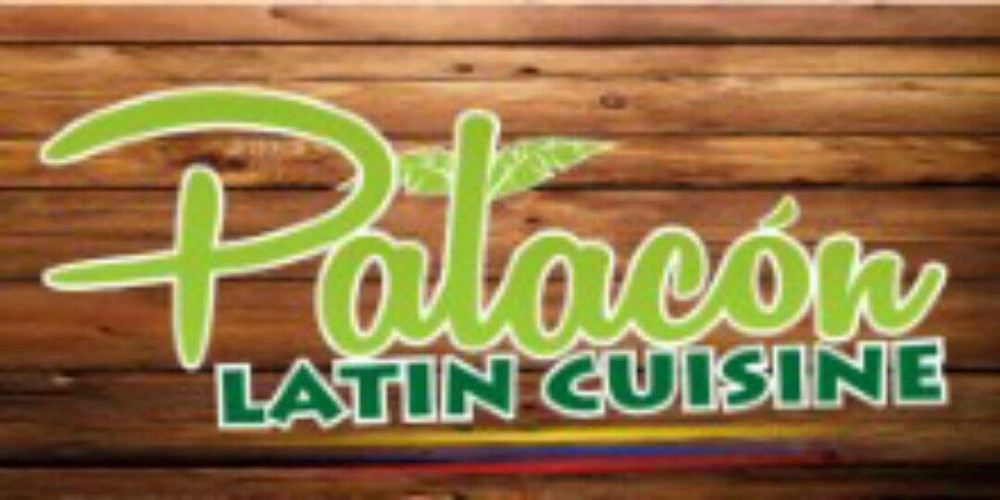Patacon Latin cuisine is an irresistible delicacy that has captured the hearts of food lovers worldwide. This simple yet savory dish, made from twice-fried plantains, has become a staple in Latin American households and restaurants alike. Whether enjoyed as a crunchy snack or served as a side dish, patacon offers a delightful taste of authentic Latin flavors.
Patacon's popularity stems from its versatility and the rich cultural heritage it represents. From street vendors in Colombia to upscale restaurants in Peru, this dish has evolved into countless variations while retaining its core identity. Its crispy texture and savory profile make it a perfect companion for a variety of toppings and dips.
As we explore the world of patacon Latin cuisine, we'll uncover its origins, preparation techniques, and the cultural significance behind this beloved snack. Whether you're a seasoned food enthusiast or simply curious about Latin American culinary traditions, this article promises to be an enlightening journey into the world of patacon.
Read also:Kampk Meats Mantua A Comprehensive Guide To The Best Meat Shop In Town
Table of Contents
- The Origin of Patacon Latin Cuisine
- How to Prepare Authentic Patacon
- Delicious Variations of Patacon
- Nutritional Value of Patacon
- Cultural Significance of Patacon
- Best Food Pairings with Patacon
- Creative Patacon Recipes
- A Brief History of Latin Cuisine
- Top Restaurants Serving Patacon
- Tips for Perfect Patacon
The Origin of Patacon Latin Cuisine
The roots of patacon Latin cuisine trace back to the fertile lands of Latin America, where plantains have been cultivated for centuries. In regions like Colombia, Venezuela, and Panama, this dish has become an integral part of local culinary traditions.
Historical Background
Historical records indicate that patacon was first prepared by indigenous communities in the Caribbean basin. These early versions of patacon were likely inspired by African culinary techniques brought over during the colonial era. The combination of ripe plantains and frying methods created a dish that perfectly balanced sweetness and savory flavors.
According to a study published in the Journal of Latin American Studies, plantains were domesticated in the tropical regions of Central and South America over 3,000 years ago. This historical context highlights the deep connection between patacon and the region's agricultural heritage.
How to Prepare Authentic Patacon
Preparing authentic patacon involves a simple yet precise process that ensures the perfect texture and flavor. Here's a step-by-step guide:
Ingredients You'll Need
- Green plantains
- Vegetable oil for frying
- Salt to taste
Step-by-Step Instructions
Begin by peeling the green plantains and slicing them into thick rounds. Fry these slices in hot oil until they turn golden brown. Once cooked, remove them from the oil and press them flat using a patacon press or a similar tool. Repeat the frying process to achieve the desired crispiness.
Season the patacon generously with salt while they're still warm. This ensures the seasoning adheres perfectly to the crispy exterior. Serve immediately or store in an airtight container for later use.
Read also:John Smith Facebook The Complete Guide To His Impact And Influence
Delicious Variations of Patacon
Patacon Latin cuisine offers endless possibilities for customization and experimentation. Here are some popular variations:
Patacon Con Queso
One of the most beloved versions is patacon con queso, where the crispy plantain is topped with melted cheese. This combination creates a delightful contrast between the crunchy exterior and creamy interior.
Patacon Picante
For those who enjoy a bit of heat, patacon picante adds a spicy kick with chili peppers or hot sauces. This variation is particularly popular in regions like Venezuela and Ecuador.
Nutritional Value of Patacon
While patacon Latin cuisine is undeniably delicious, it's important to understand its nutritional profile. A typical serving of patacon contains:
- Approximately 150 calories per 100 grams
- Rich in potassium and vitamin C
- Contains healthy carbohydrates
A study published in the Journal of Food Science highlights the nutritional benefits of plantains, which are a primary ingredient in patacon. These nutrients contribute to overall health and well-being when consumed in moderation.
Cultural Significance of Patacon
Patacon holds a special place in Latin American culture, symbolizing community and tradition. It's often served during festivals, family gatherings, and special occasions. The preparation and sharing of patacon bring people together, reinforcing social bonds and cultural identity.
Regional Differences
While the basic preparation remains consistent, regional variations in seasoning and serving styles make each country's patacon unique. For instance, Colombian patacon is typically served with hogao sauce, while Venezuelan versions may include avocado or cheese.
Best Food Pairings with Patacon
To elevate your patacon experience, consider pairing it with complementary dishes:
- Grilled meats like steak or chicken
- Fresh salads with citrus dressings
- Traditional salsas and dips
These combinations enhance the flavors of patacon while providing a balanced meal. Experimenting with different pairings allows you to discover new taste profiles and enjoy patacon in diverse ways.
Creative Patacon Recipes
For those looking to explore beyond traditional patacon, here are some innovative recipes:
Patacon Nachos
Transform patacon into nachos by layering them with beans, cheese, and guacamole. This modern twist combines Latin flavors with popular snack elements.
Patacon Wraps
Use patacon as a wrap base for fillings like pulled pork, lettuce, and salsa. This creative approach offers a fun way to enjoy patacon in a portable format.
A Brief History of Latin Cuisine
Understanding the broader context of Latin cuisine provides valuable insight into the development of dishes like patacon. Latin American culinary traditions are shaped by indigenous practices, Spanish colonization, and African influences.
According to culinary historians, the blending of these cultural elements has resulted in a rich tapestry of flavors and techniques. Patacon exemplifies this fusion, incorporating native ingredients with imported cooking methods.
Top Restaurants Serving Patacon
For authentic patacon experiences, consider visiting these renowned establishments:
- La Cocina Latina in Miami
- Casa Tua in Bogotá
- El Rincon Venezolano in Caracas
These restaurants consistently receive high ratings for their patacon dishes, offering both traditional and innovative variations.
Tips for Perfect Patacon
Achieving the perfect patacon requires attention to detail and some useful tips:
- Use green plantains for the best texture
- Fry at the right temperature to avoid greasiness
- Press the plantains evenly for consistent thickness
By following these guidelines, you can create patacon that rivals the best restaurant versions. Practice and experimentation will further refine your technique, allowing you to master this classic Latin dish.
Conclusion
In conclusion, patacon Latin cuisine represents much more than a simple snack. It embodies the rich cultural heritage and culinary innovation of Latin America. From its humble origins to its global popularity, patacon continues to captivate food enthusiasts with its irresistible flavors and versatility.
We invite you to try making patacon at home and share your experiences in the comments below. Your feedback and suggestions help us improve and expand our content. For more articles on Latin American cuisine, explore our website and discover new recipes and insights.


